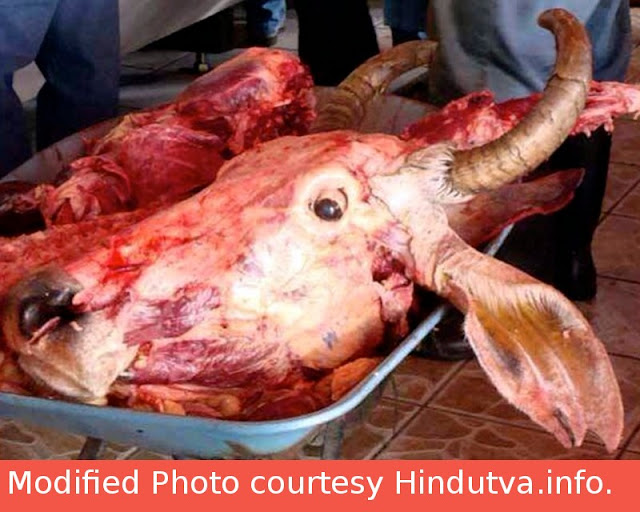What is the difference between a chlld bathing its doll and priests bathing an idol?
Hagiographers and blind worshippers of Vivekananda often quote the incident of Swami's encounter with the Prince Mangal Singh , - the Maharaja of Alwar, Rajasthan.
Vivekananda , as was his habit of hanging around kings and rulers, visited the Alwar Samsthan, He had an interesting conversation with Prince Mangal Singh.
The Prince expressed his lack of faith in idol worship.
Vivekananda, then asked the servants to bring a picture of the Maharaja hanging on the wall. The servants brought.
Vivekananda asked the Diwan (Minister or vazir) to spit on the picture. The Minister could not spit on the picture , because he temporarily saw in the picture, the image of his late king.
Vivekananda (for the purpose of drama) asked them why they were hesitating to spit because it was only a piece of paper. The servants and the Diwan could not spit because they saw a likeness of their late master in the picture.
Vivekananda then used the occasion to lecture them about the advantages and merits of idol worship.
Vivekananda , as was his habit of hanging around kings and rulers, visited the Alwar Samsthan, He had an interesting conversation with Prince Mangal Singh.
The Prince expressed his lack of faith in idol worship.
Vivekananda, then asked the servants to bring a picture of the Maharaja hanging on the wall. The servants brought.
Vivekananda asked the Diwan (Minister or vazir) to spit on the picture. The Minister could not spit on the picture , because he temporarily saw in the picture, the image of his late king.
Vivekananda (for the purpose of drama) asked them why they were hesitating to spit because it was only a piece of paper. The servants and the Diwan could not spit because they saw a likeness of their late master in the picture.
Vivekananda then used the occasion to lecture them about the advantages and merits of idol worship.
| Blogger's Comments: |
Respecting a picture/photo/idol/symbol is different from worshipping it. It is just a momentary symbolic gesture. We can compare it to a child kissing its doll for a moment. |
Idol worship carried out in reasonable limits becomes understandable whereas when prolonged it becomes an obsession. When converted into business, it becomes obnoxious. Let us take the case of child which kisses its doll for a moment. The parents and relatives nearby enjoy the child's act. The child bathes it, clothes it, decorates it. Parents and relatives accept it upto some limits. They consider the child as obsessed when it goes on treating the doll as its sibling and lives with it for 24/7/365. They try to discourage the child and admonish it. They take the child to a psychologist/psychiatrist if the child persists in its obsession with the dolls. This analogy we can apply to serious home-worshippers and temple-priests. Washing the idols with milk, curd, clarified butter, coconut water, honey, sandalwood paste, perfumed water, 24/7/365 days, decorating them with silks, adorning them with garlands and gold ornaments worth millions and billions is nothing but childish. It becomes a business when tickets are sold for the ceremonies. The above remarks apply not only to Hinduism but universally to all religions where some symbol is taken for the purpose, e.g. a wall. Or a cross. Or some thing else. The key element which distinguishes a disposition of "honor and respect towards something" and "obsessive worship" is the duration and the degree of ostentation used. Moderation makes the difference which distinguishes a revelling child and an insane child. How do we react when visit a museum or a memorial of Gandhi/King/Lenin/Lincoln? We look at the photos, statues and other objects with respect. We do not worship them calling them Gods. We may, at the most, recollect some good things said/done by them and try to emulate one or two of them. We cannot equate objects evoking some respect with supernatural powers. Another example Let us take a currency note. It is just a piece of paper. We treat it as valuable because it commands some exchange value for goods and services. The same is the case with gold coins. They are just metal discs. We look at them with awe because we can exchange them for goods and services. Only misers worship currency and gold. There are some trading communities in India which worship currency notes and gold, treating them as the Goddess of Wealth. There is a 1963 Hollywood film with the title 'It is a mad, mad, mad, mad world.' directed by Stanley Kramer. The dividing line between 'recognition of value of something' and 'madness' is very thin. The analytical line is so slippery that we may mistake one for the other. |



Comments